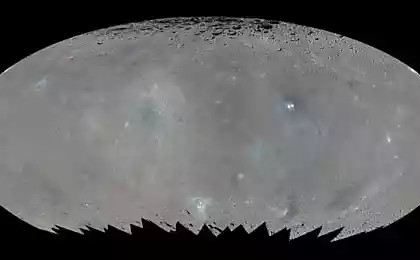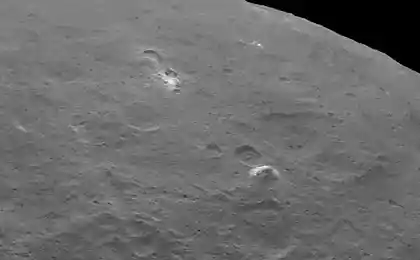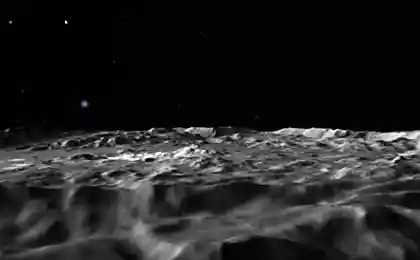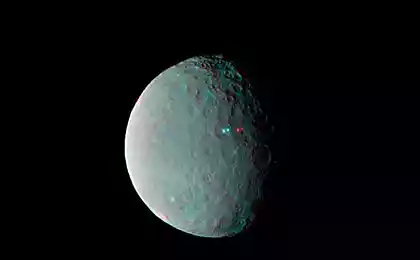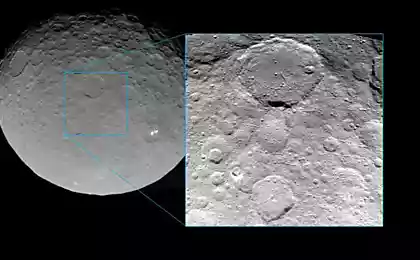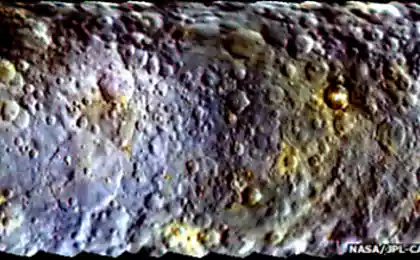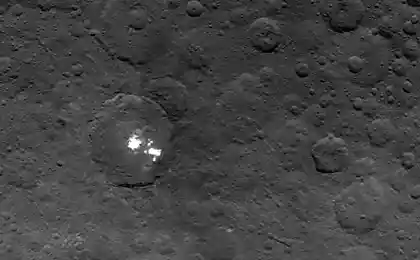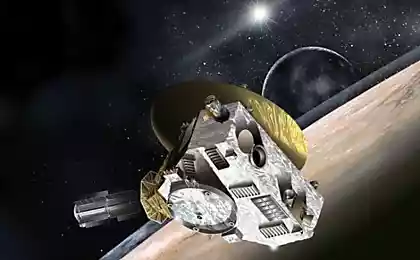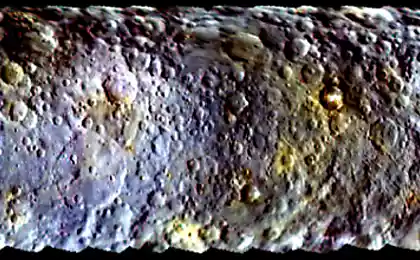1136
Dawn interplanetary probe approaches the orbit of the dwarf planet Ceres
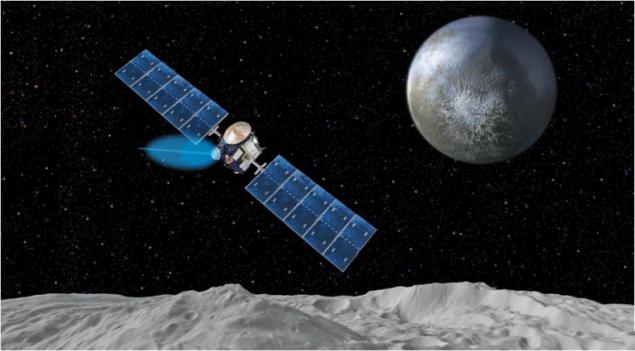
In our solar system a lot of interest for the study, and one of them - the dwarf planet Ceres. This heavenly body is not a satellite of any planet, the object is in the asteroid belt. In this case, Ceres is of some interest to scientists because of its composition.
The fact that, according to current estimates, the amount of fresh water on the Ceres may be equal to water supplies in the world (and this planet with a diameter of 950 kilometers). And Ceres is from the earth is not so far away. And now coming to Ceres interplanetary probe Dawn, who can clarify many questions.
Scientists have obtained images of the surface of Ceres with the help of the Hubble telescope and the Keck Observatory (Hawaii). already known , that the surface of Ceres water evaporates. Why is this happening - is unclear, possibly reflecting the work kriovulkanov.
Dawn probe was launched in 2007 and is now moving to Ceres at a speed of about 725 kilometers per hour. In March 2015 the probe should reach the orbit of Ceres, and begin a detailed study of the planet. What scientists see? While few can answer this question. "Ceres is almost perfect for us a mystery ... What we can predict with confidence, so that's what we will be surprised», - considers representative mission Dawn Christopher Russell.
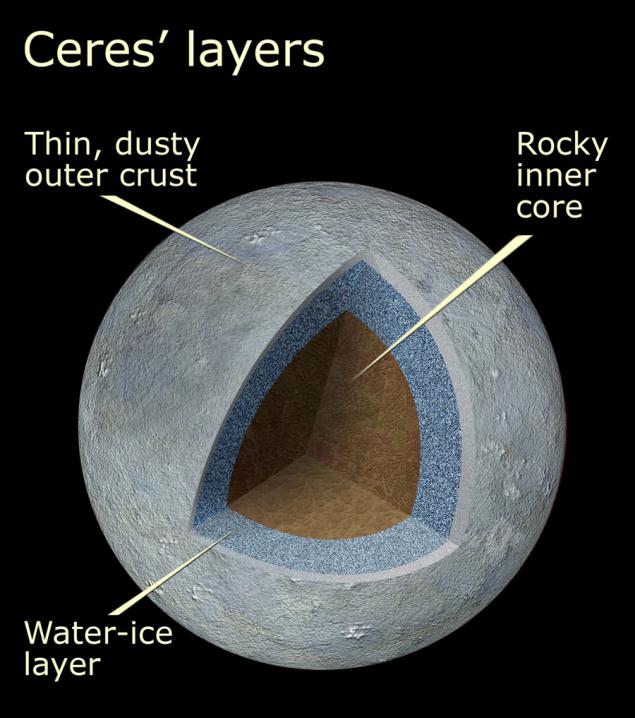
As in other cases, the photographs of the planet will begin before the settlement date. In late January probe begins sending photos of Ceres on Earth. And these pictures are the highest quality of all the scientists received so far. As a rapprochement with Ceres we learn more and more interesting things about this dwarf planet, and the wait is very little.
By the way, in 2011, Dawn probe in orbit of the asteroid Vesta. If convergence with Ceres is successful, then the probe will be the first in the history of space exploration unit, which was in orbit of two objects in the solar system.
The study Ceres will be held in three stages. The first stage - is to study the planet from a distance of 13, 5 thousand kilometers. The second - 4, 5 thousand kilometers. And the third - 1, 5 thousand kilometers.
Source: geektimes.ru/post/243925/
The first case of attempt to capture 3D-ekranki
CES2015: children's plates measuring up to 65 inches
